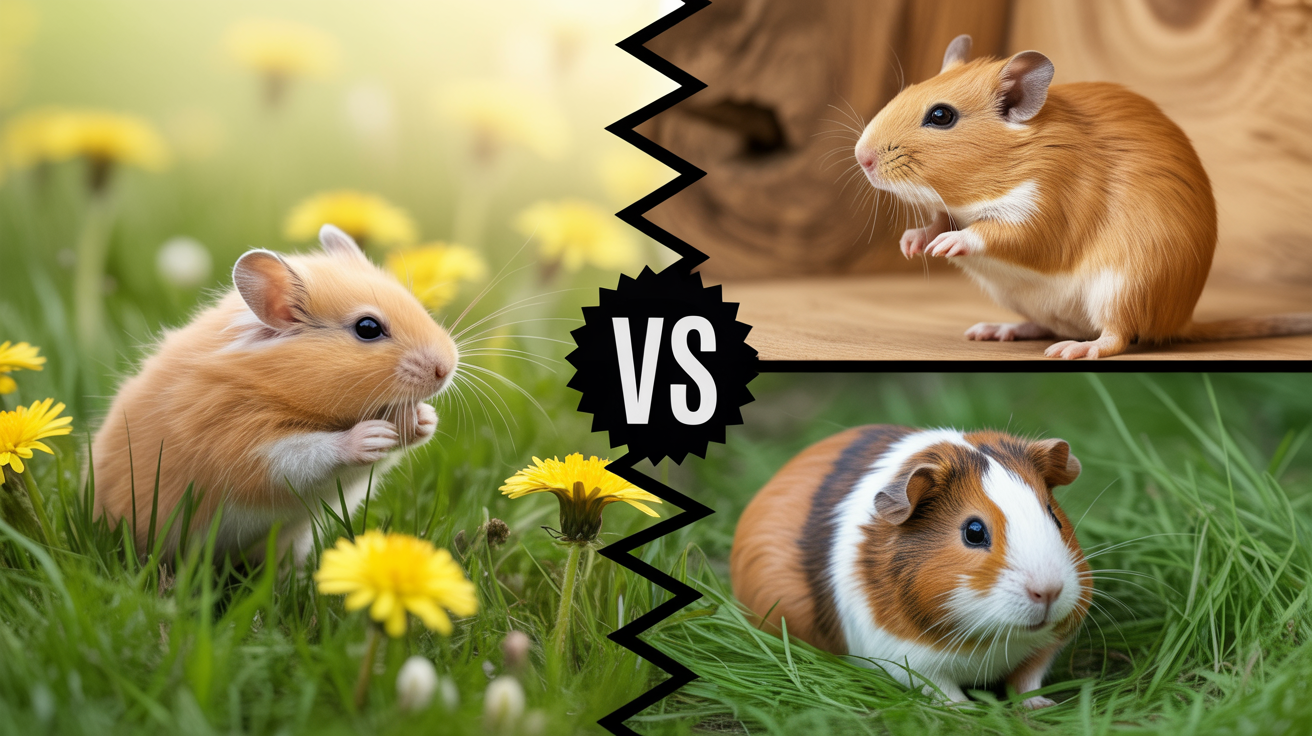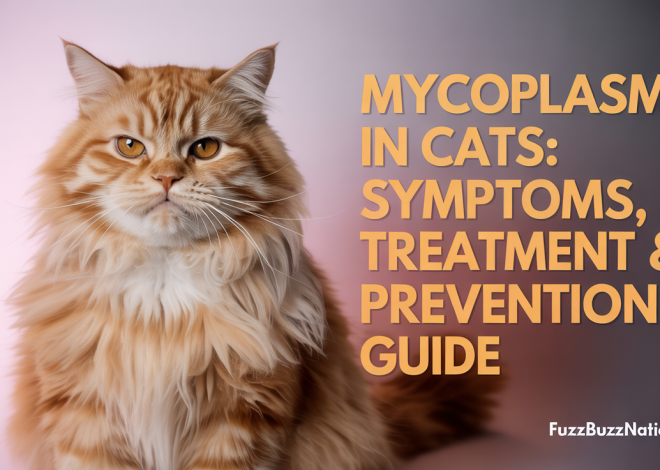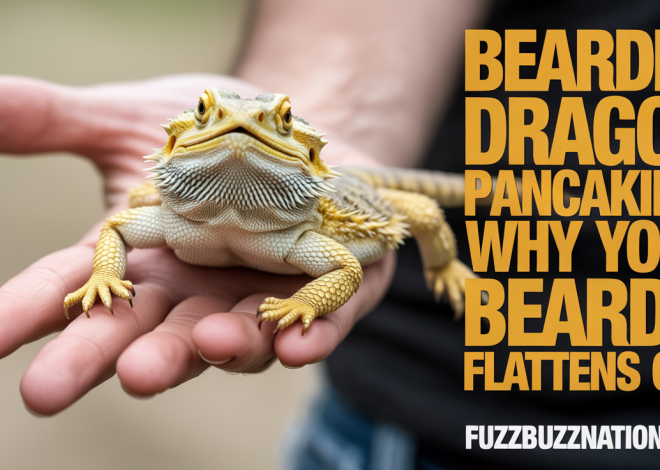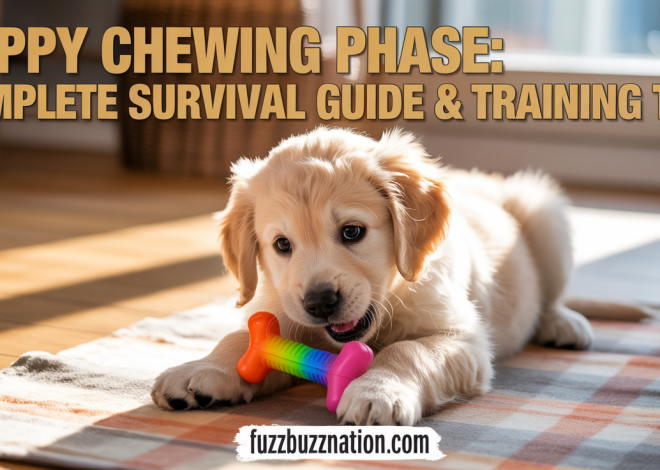
Gerbil vs Hamster vs Guinea Pig: Complete Comparison Guide
Choosing between gerbils, hamsters, and guinea pigs requires understanding significant differences in care requirements, space needs, and social behaviors that most pet store advice completely overlooks. After caring for all three species through fostering 23 small animals over seven years and maintaining multi-species rescue setups, I’ve learned which pets match different lifestyles and what new owners really need to know before making this important decision.
The essential answer: Guinea pigs require the most space and social interaction but live longest and bond closest with humans. Gerbils need companions and minimal odor maintenance but are more fragile. Hamsters are solitary, nocturnal, and easiest for beginners but have shorter lifespans and more territorial behaviors.
Understanding these fundamental differences prevents the disappointment and rehoming that occurs when pet expectations don’t match reality, particularly regarding space requirements and social needs that vary dramatically between species.
Size and Physical Characteristic Differences
Guinea Pigs: The Large and Sturdy Option
Guinea pigs are the largest of these three pets, weighing 1.5-2.5 pounds when fully grown and measuring 8-10 inches in length. Their robust build makes them less fragile than smaller options, which appeals to families with children who want a pet they can handle safely.
During my years fostering guinea pigs, I’ve observed that their size contributes to their hardiness and longevity. My rescue guinea pig Patches lived to 8 years old, remaining active and social throughout most of his life despite his substantial size requiring larger housing.
The variety in guinea pig breeds offers different coat types, colors, and ear shapes that provide aesthetic appeal beyond basic pet ownership. Long-haired varieties like Peruvians require daily grooming, while short-haired Americans need minimal coat care.
Their sturdy legs and body structure make guinea pigs less prone to injury from gentle handling compared to more delicate small pets. This durability factor makes them particularly suitable for supervised interaction with responsible children.
Gerbils: Compact and Agile
Adult gerbils weigh only 2-4 ounces and measure 4 inches in body length plus a 4-inch tail. Their small size makes them easy to house but also more vulnerable to injury from improper handling or falls.
My experience caring for gerbil pairs revealed their incredible agility and jumping ability. Gerbils can leap several times their body length, requiring secure housing with tight-fitting lids to prevent escapes that can be difficult to resolve.
The distinctive long tail serves as a balance mechanism during their acrobatic movements but also represents a vulnerability. Gerbil tails can be injured if grabbed or caught, requiring gentle handling techniques that some children find challenging to master.
Their mouse-like appearance with larger hind legs gives gerbils a unique aesthetic that appeals to people seeking pets with distinctive characteristics different from typical hamster or guinea pig looks.
Hamsters: The Middle Ground
Hamsters vary significantly in size between species, with Syrian hamsters weighing 4-6 ounces and dwarf varieties weighing 1-2 ounces. This size range offers options for different housing capabilities and handling preferences.
Syrian hamsters, the most common pet variety, reach 5-7 inches in length and provide a substantial feel without the space requirements of guinea pigs. Their size makes them manageable for most adults while still offering satisfying interaction opportunities.
Dwarf hamster varieties like Roborovski and Chinese hamsters offer tiny pet options but require extra care due to their small size and quick movements. My experience with dwarf hamsters showed they’re more suitable for observation than frequent handling.
The cheek pouches that hamsters use for food storage create their characteristic chubby-cheeked appearance and provide entertainment as owners watch stuffing and emptying behaviors unique to this species.
Housing and Space Requirements
Guinea Pig Housing: Think Big
Guinea pigs require minimum 7.5 square feet for one pig, 10.5 square feet for two, but larger spaces significantly improve quality of life. Commercial guinea pig cages typically fall short of adequate size requirements, necessitating custom or multiple-cage solutions.
My guinea pig rescue setup uses C&C (cubes and coroplast) caging that provides 16 square feet for pairs, allowing natural behaviors like running, popcorning, and exploration. The investment in proper housing pays dividends in pet health and happiness.
Vertical space matters less for guinea pigs than floor space, but multi-level configurations can maximize use of available room. Ramps must have proper traction and gentle inclines to accommodate guinea pig movement patterns.
Indoor housing works best for guinea pigs year-round, though supervised outdoor time in secure enclosures provides enrichment and vitamin D synthesis that benefits overall health.
Gerbil Housing: Secure and Enriched
A 20-gallon long tank provides minimum space for a gerbil pair, but 40-gallon tanks allow for better enrichment and natural behaviors. The tank setup prevents escape while accommodating gerbils’ digging instincts through deep bedding layers.
Gerbil housing requires secure mesh lids since these pets are exceptional climbers and jumpers. Even small gaps can lead to escapes that are challenging to resolve due to gerbils’ speed and hiding instincts.
Enrichment becomes crucial in gerbil housing due to their active nature and intelligence. Multiple levels, tunnels, exercise wheels, and hiding spots prevent boredom that can lead to stereotypical behaviors or aggression.
Temperature control matters more for gerbils than other small pets since they originate from desert environments. Avoid drafty locations and maintain consistent temperatures between 65-75°F for optimal health.
Hamster Housing: Species-Specific Needs
Syrian hamsters need individual housing with minimum 450 square inches of floor space, though 600+ square inches provides better quality of life. The solitary nature means each hamster requires their own complete setup.
Dwarf hamster species can sometimes live in pairs if introduced properly, but fighting can develop suddenly, requiring separate housing options on standby. My experience showed that housing multiple hamsters together creates more stress than benefits.
Wire cages work for hamsters if bar spacing prevents escape, but tanks or bin cages often provide better ventilation control and enrichment opportunities. Proper ventilation prevents ammonia buildup from concentrated urine areas.
Bedding depth of 4-6 inches allows for natural burrowing behaviors that are essential for hamster psychological well-being. Inadequate bedding depth can create stress and abnormal behaviors.
Diet and Nutrition Differences
Guinea Pig Dietary Complexity
Guinea pigs require vitamin C supplementation since they cannot synthesize this essential nutrient internally. Daily vitamin C needs range from 30-50mg, provided through fresh vegetables, fortified pellets, or supplements.
My guinea pig feeding routine includes 1/4 cup quality pellets, 1 cup varied fresh vegetables, and unlimited timothy hay daily per pig. The vegetable variety prevents nutritional deficiencies while providing enrichment through different tastes and textures.
Timothy hay forms the foundation of guinea pig nutrition and must be available continuously. Hay supports dental health, provides fiber for proper digestion, and offers behavioral enrichment through foraging activities.
Fresh vegetables include leafy greens like romaine lettuce, bell peppers for vitamin C, and limited fruit treats. Avoid iceberg lettuce, onions, chocolate, and other toxic foods that can cause serious health problems.
Gerbil Nutritional Needs
High-quality gerbil pellets provide the nutritional foundation, supplemented with small amounts of fresh vegetables and occasional seeds or nuts. Gerbils need about 1 tablespoon of pellets daily per animal.
My gerbil feeding experience showed they prefer variety in their diet and benefit from foraging opportunities. Hiding small amounts of food around their enclosure encourages natural behaviors and provides mental stimulation.
Fresh water must be available constantly, though gerbils drink relatively little compared to other pets due to their desert origins. Water bottles work better than bowls to prevent contamination and spillage.
Avoid sugary foods, chocolate, onions, and foods high in fat that can cause digestive upset or health problems. Gerbils have sensitive digestive systems that require consistent, appropriate nutrition.
Hamster Feeding Requirements
Quality hamster pellets form the diet base, with Syrian hamsters eating 1-2 tablespoons daily and dwarf species eating proportionally less. Choose pellets without colorful added pieces that provide little nutritional value.
Fresh vegetables can supplement the pellet diet but should be introduced gradually to prevent digestive upset. Hamsters have cheek pouches that can become impacted with inappropriate foods, requiring careful food selection.
My hamster care experience revealed they benefit from occasional protein sources like cooked chicken or hard-boiled eggs, particularly for pregnant or nursing females. These supplements should be offered sparingly and removed quickly if not consumed.
Water availability through bottles or shallow dishes prevents dehydration, though hamsters drink moderately compared to larger pets. Clean, fresh water should be available continuously regardless of delivery method.
Lifespan and Long-Term Commitment Considerations
Guinea Pig Longevity
Guinea pigs typically live 6-8 years, with some reaching 10 years under excellent care conditions. This longer lifespan represents a significant commitment that potential owners must consider seriously.
My longest-lived guinea pig reached 9 years, remaining active and social until his final months. The extended lifespan allows for deep bonding between pets and owners but also means years of consistent care requirements and veterinary expenses.
Health problems become more common in senior guinea pigs, including dental issues, arthritis, and organ dysfunction. Planning for increased veterinary care costs and daily management helps ensure quality of life throughout their extended lifespan.
The emotional investment in guinea pigs intensifies due to their longevity and social nature. Losing a guinea pig after many years of close companionship creates significant grief that potential owners should anticipate.
Gerbil Lifespan Reality
Gerbils typically live 2-3 years, with exceptional individuals reaching 4 years. This shorter lifespan means less long-term commitment but also more frequent loss experiences for attached owners.
During my gerbil fostering years, I learned that their brief lives pack significant personality and bonding opportunities into a compressed timeframe. Gerbils can become quite attached to their human caregivers despite the short relationship duration.
The shorter lifespan may appeal to people uncertain about long-term pet commitment, but it also means children will experience pet loss more frequently. Consider family emotional readiness for repeated loss experiences.
Geriatric health issues develop quickly in gerbils due to their accelerated aging process. What seems like a minor health concern can progress rapidly, requiring prompt veterinary attention and end-of-life decision-making skills.
Hamster Life Expectancy
Hamsters live 1.5-3 years depending on species, with Syrian hamsters generally living longer than dwarf varieties. This short lifespan requires emotional preparation for relatively quick loss experiences.
My hamster care experience showed that their abbreviated lives can still provide meaningful companionship, particularly for children learning about pet responsibility. The shorter commitment may suit families uncertain about longer-term obligations.
Health problems can develop suddenly in hamsters due to their high metabolic rate and genetic predispositions. Tumors, wet tail, and respiratory issues can progress rapidly, requiring immediate veterinary intervention.
The brief lifespan makes hamsters suitable for teaching children about life cycles and responsibility without decade-long commitments, but it also means frequent replacement if continuous pet ownership is desired.
Social Needs and Behavioral Characteristics
Guinea Pig Social Requirements
Guinea pigs are highly social animals that thrive in pairs or small groups. Single guinea pigs often develop behavioral problems and depression despite human interaction, making companionship essential for psychological well-being.
My experience housing solo guinea pigs versus pairs clearly demonstrated the difference in activity levels, vocalizations, and overall contentment. Paired guinea pigs engage in social behaviors impossible to replicate through human interaction alone.
The communication repertoire of guinea pigs includes various vocalizations, each with specific meanings that owners can learn to interpret. Wheeking for food, purring during contentment, and chattering during disputes provide insight into their emotional states.
Guinea pigs bond with their human caregivers while maintaining their need for species-specific companionship. This dual social structure creates rich interaction opportunities but also requires understanding of their social hierarchy and communication needs.
Gerbil Social Dynamics
Gerbils are obligate social animals that become stressed and develop health problems when housed alone. Pairs or small groups provide the social interaction essential for psychological and physical well-being.
My gerbil pairs demonstrated complex social behaviors including mutual grooming, play fighting, and coordinated activities that enrich their lives significantly. The social bond between gerbils is intense and difficult to replace if one member dies.
Introducing new gerbils requires careful procedures since adults can fight violently if not properly introduced. The split-cage method allows gradual familiarization that reduces aggression risks during integration.
Gerbil social interaction with humans develops gradually and varies individually. Some gerbils become quite tame and enjoy gentle handling, while others prefer observation-based relationships with minimal direct contact.
Hamster Solitary Nature
Most hamsters are solitary animals that prefer individual housing once they reach sexual maturity. Syrian hamsters must be housed alone to prevent serious fighting that can result in injury or death.
My experience attempting to house adult Syrian hamsters together consistently resulted in aggressive behaviors that required immediate separation. The territorial nature of adult hamsters makes cohabitation dangerous rather than beneficial.
Some dwarf hamster species can live in pairs if introduced early, but adult aggression can develop suddenly even in previously compatible pairs. Having backup housing available becomes essential when attempting social housing.
Human interaction with hamsters varies by individual personality and handling frequency. Some hamsters become quite tame and enjoy gentle interaction, while others remain skittish and prefer minimal handling throughout their lives.
Health Care and Veterinary Considerations
Guinea Pig Health Management
Guinea pigs require exotic animal veterinarians familiar with their specific health needs and anatomical differences from cats and dogs. Establishing veterinary relationships before health problems develop ensures prompt, appropriate care.
Common health issues include dental problems requiring specialized care, respiratory infections, and vitamin C deficiency. My guinea pig care experience showed that early intervention prevents minor issues from becoming serious, expensive problems.
Spaying and neutering guinea pigs requires experienced exotic veterinarians due to surgical complexity and anesthesia sensitivity. These procedures prevent reproductive cancers and behavioral problems but carry higher risks than similar procedures in traditional pets.
Routine health monitoring includes weekly weight checks, daily observation for appetite changes, and monthly general health assessments. Guinea pigs hide illness well, making careful observation essential for early problem detection.
Gerbil Health Challenges
Gerbils require exotic veterinarians experienced with their unique physiology and small size. Their desert origins create specific health considerations different from other small pets.
Respiratory problems can develop quickly in gerbils exposed to drafts, dusty bedding, or poor air quality. Their sensitive respiratory systems require consistent environmental conditions and prompt treatment for any symptoms.
Tail injuries represent common gerbil health problems due to improper handling or housing hazards. Degloving injuries can occur if tails are grabbed, requiring immediate veterinary attention and sometimes amputation.
Routine health care for gerbils focuses on prevention since their small size makes medical interventions challenging. Maintaining proper environment and nutrition prevents most health problems better than treating them after development.
Hamster Health Issues
Hamsters commonly develop specific health problems including wet tail (proliferative ileitis), respiratory infections, and tumors. Finding experienced exotic veterinarians familiar with hamster medicine ensures appropriate treatment options.
Wet tail can be fatal if not treated promptly with appropriate antibiotics. The stress-related condition affects young hamsters most commonly but can occur at any age during stressful periods.
Tumors develop frequently in older hamsters, particularly females with mammary tumors. Treatment options depend on tumor location and hamster overall health, requiring careful consideration of quality of life factors.
Dental problems can develop in hamsters with inadequate chewing opportunities or genetic predispositions. Providing appropriate chew toys and monitoring eating habits helps prevent serious dental complications.
Cost Analysis: Initial Setup and Ongoing Expenses
Guinea Pig Financial Investment
Initial setup costs for guinea pigs range from $200-400 including appropriate housing, water bottles, food bowls, hideouts, and initial supplies. The larger size requirements drive higher setup costs compared to smaller pets.
Monthly ongoing expenses include approximately $30-50 for quality pellets, hay, and fresh vegetables. The higher food requirements and need for constant hay availability create ongoing costs that exceed smaller pet needs.
Veterinary care costs range from $75-150 for routine checkups and $200-500 for common health problems. The longer lifespan means more cumulative veterinary expenses over the pet’s lifetime.
Housing expansion or replacement costs occur periodically as equipment wears out or family needs change. Quality C&C caging or commercial large enclosures represent significant but worthwhile investments in pet welfare.
Gerbil Economic Considerations
Gerbil setup costs range from $100-200 for tank housing, water bottles, exercise wheels, and enrichment items. The smaller size reduces housing costs but requires secure enclosures that may cost more than basic small pet housing.
Monthly expenses typically range from $15-25 for pellets, bedding, and occasional treats. Gerbils eat relatively little but require specific bedding types and enrichment items that create ongoing costs.
Veterinary expenses can be proportionally higher for gerbils due to their exotic status and small size complicating treatments. Routine checkups cost $50-100, while health problems can range from $100-300.
The need for pairs or groups doubles housing and ongoing costs compared to solitary pets. Planning for multiple animals increases both initial setup and lifetime expenses significantly.
Hamster Budget Planning
Hamster setup costs range from $75-150 for appropriate housing, bedding, food bowls, exercise wheels, and hideouts. The moderate size requirements create reasonable initial investment needs.
Monthly ongoing expenses typically range from $10-20 for pellets, bedding, and treats. Individual housing reduces food costs compared to social species requiring multiple animal feeding.
Veterinary care costs are similar to other small pets, with checkups costing $50-100 and health problems ranging from $100-400. The shorter lifespan reduces cumulative veterinary expenses over time.
Replacement costs occur more frequently due to shorter lifespans, requiring periodic reinvestment in new pets and setup refreshment. Consider the emotional and financial impact of frequent pet replacement.
Matching Pets to Owner Lifestyles
Best Choices for Families with Children
Guinea pigs often work best for families with children over 8 years old due to their hardiness, social nature, and longer lifespan that allows for meaningful relationships. Their size makes them easier to handle safely with proper supervision.
The vocal nature of guinea pigs provides feedback about their emotional state, helping children learn to read animal body language and respond appropriately. This educational aspect supports child development and empathy building.
Gerbils can work for older children who understand gentle handling requirements, but their fragility and escape potential make them challenging for younger or less responsible children.
Hamsters suit children who prefer observational pets over interactive ones. The solitary nature means less social responsibility, but the shorter lifespan requires emotional preparation for frequent loss experiences.
Ideal Pets for Apartment Living
Guinea pigs adapt well to apartment living if space requirements are met and noise considerations addressed. Their daytime activity patterns align better with human schedules than nocturnal alternatives.
Gerbils work well in apartments due to minimal odor production and reasonable space requirements. Their quiet nature and lack of barking or loud vocalizations suit close living situations.
Hamsters can be challenging in apartments due to nocturnal activity including wheel running and cage manipulation that can disturb neighbors. Consider noise implications before choosing hamsters for shared living spaces.
Suitable Options for Senior Owners
Guinea pigs provide companionship and routine that many senior owners appreciate, though the physical demands of daily care and longer lifespan commitment require careful consideration.
Gerbils offer entertainment and relatively low maintenance for seniors who enjoy watching animal behaviors but don’t want intensive daily care requirements.
Hamsters provide moderate care requirements with observation-based relationships that suit seniors preferring less interactive pets while still maintaining daily routines and purpose.
Frequently Asked Questions
Which pet is best for beginners with no small animal experience?
Guinea pigs are often best for beginners due to their hardiness, clear communication, and forgiving nature regarding handling mistakes. Their larger size makes them less fragile, and their social vocalizations help owners understand their needs. However, they require more space and higher ongoing costs. Hamsters can work for beginners who want lower commitment and smaller space requirements, but their nocturnal nature and shorter lifespan present different challenges.
Can gerbils, hamsters, and guinea pigs live together in the same cage?
Never house different species together as they have incompatible social needs, different dietary requirements, and size differences that create safety risks. Guinea pigs are much larger and could accidentally injure smaller animals. Each species has specific environmental needs for temperature, humidity, and enrichment that cannot be met in shared housing. Always provide species-appropriate housing for optimal health and safety.
Which pet requires the least daily care and maintenance?
Gerbils require the least daily maintenance due to minimal odor production, small food quantities, and efficient waste habits. They need daily food and water checks but don’t require daily cage cleaning like other options. However, they still need daily observation for health monitoring and social interaction. All three species require daily care commitment, but gerbils have the lowest daily maintenance burden while still providing engaging pet ownership experiences.
What are the space requirements for each pet in a small apartment?
Guinea pigs need minimum 7.5 square feet of cage space plus room for exercise and storage, making them challenging for very small apartments. Gerbils can thrive in a 40-gallon tank setup that fits on a desk or shelf, making them apartment-friendly. Hamsters need moderate space with a 450+ square inch cage that fits on furniture. Consider not just cage space but also storage for supplies, exercise areas, and your comfort navigating around pet setups.
Which pet is most likely to bond with their human owner?
Guinea pigs typically form the strongest bonds with humans due to their social nature, longer lifespan, and vocal communication that creates interactive relationships. They learn to recognize their owners and respond to voices and routines. Gerbils can become tame and enjoy gentle handling but maintain stronger bonds with their gerbil companions. Hamsters vary individually but generally remain more independent, though some develop trust and enjoy interaction with consistent, patient handling.
Making the Right Choice for Your Situation
Choosing between gerbils, hamsters, and guinea pigs requires honest assessment of your space, time, budget, and expectations for pet interaction. Each species offers unique benefits and challenges that match different owner lifestyles and preferences.
Consider not just initial enthusiasm but long-term commitment, particularly with guinea pigs whose extended lifespans require years of consistent care. Factor in family changes, living situation stability, and financial planning for ongoing expenses throughout the pet’s lifetime.
The most successful small pet ownership experiences occur when species characteristics align with owner expectations and capabilities. Research thoroughly, visit with each species if possible, and choose based on realistic assessment of your situation rather than impulse or appearance preferences.
Remember that all three species can provide rewarding pet ownership experiences when their needs are properly met and their characteristics match owner lifestyles. The best pet for you is the one whose care requirements you can meet consistently while enjoying the unique behaviors and companionship each species offers.


